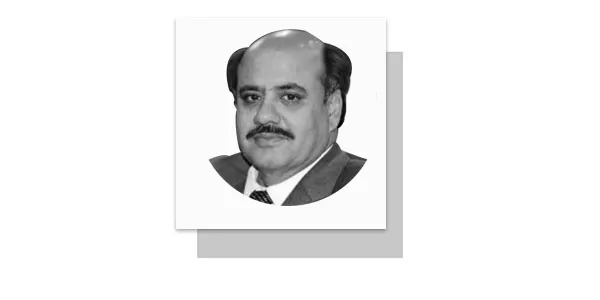DONALD Trump’s triumph in the 47th presidential election held on November 5, 2024, has kicked off an intensive debate among commentators about his Administration’s internal and external governance preferences. Indeed, there would be a few visible shifts at the domestic level and there is little room for revamping the United States’ foreign and strategic policy in the rapidly transforming global geopolitics. Therefore, one would refrain from drawing optimistic and pessimistic conclusions about the upcoming Trump Administration. Trump 2.0 Administration continues publicising his catchy phrase—”America First.” Realistically, it will be unable to accomplish this in isolation and, therefore, more dependent on allies due to rising China and assertive Russia, which curtails America’s global primacy. Nevertheless, the determinants of Trump’s foreign and strategic policy will be less military involvement abroad, decreased military aid, increased pressure on allies to contribute more to their defence, a rise in trade tariffs, a harder line on China and Iran and solidifying Indo-US threshold alliance. Precisely, he prioritizes great-power competition considerations in foreign and strategic policy.
President Trump has to deal intelligently and firmly with the ongoing two wars, i.e., the war in Gaza and the war in Ukraine. Besides, he will encounter increasing strategic convergence between China, Iran, North Korea and Russia. Therefore, he will adopt the Reaganesque policy of peace through strength that ensures the modernization of the American armed forces. He will provide gigantic financial support for modernizing the nuclear arsenal and space war-fighting capabilities. Besides, he will pressurize NATO members and treaty allies to contribute more to ensure US-led military alliances in Europe and Asia have the capabilities for credible deterrence and use force decisively if deterrence fails.
In his second Administration, Trump’s policy toward Asia-Pacific will likely be similar to the approach during his first term. He continued China’s containment policy through the regional allies by strengthening multilateral security groups named QUAD, I2U2 and AUKUS and consolidated existing multilateral and bilateral security arrangements in the Asia-Pacific. He continues Biden’s Administration policy to encourage NATO to consolidate further ties with Australia, Japan, New Zealand and South Korea. However, during Trump 2.0, engaging North Korean leader Chairman Kim Jong Un will be difficult due to the cementing of a strategic partnership between Moscow and Pyongyang. On June 19, 2024, President Putin and Chairman Kim signed a ‘Treaty on the Comprehensive Strategic Partnership,’ which aims at “developing a permanent partnership based on the principles of mutual respect for national sovereignty, non-aggression on territory, non-interference in internal affairs and equality, as well as other international legal principles.” It provides mutual assistance in the event of aggression against Russia or North Korea.
The disturbing development for the Iranian ruling elite is the alleged involvement of an Iranian man in a plot conspired by Iran’s elite Revolutionary Guards Corps (IRGC) in the assassination of President-elect Donald Trump during the election campaign. On November 8, 2024, the Justice Department announced that Shakeri, as an IRGC asset residing in Tehran, had informed law enforcement “that he was tasked on October 7, 2024, with providing a plan to kill” Trump. On September 27, 2024, Trump said, “Big threats on my life by Iran. Iran already made moves that didn’t work out, but they will try again.” The trends indicate that Trump would adopt an aggressive stance against Iran, in which sanctions would not just increase but be enforced. However, he will not receive the assistance of China and Russia in the United Nations Security Council to levy sanctions against Iran. Russia and China are almost certain to veto any anti-Iran resolution in the Security Council. Another frustrating factor for Trump is the unavailability of Saudi Arabia and the United Arab Emirates’ act against Iran and Iranian interests in the Middle East. Both have turned inward and are seeking to calm tensions with Iran through the assistance of China.
Trump will try to avoid increasing Iran’s missile and nuclear capabilities. Notably, during his previous tenure, he thwarted the Joint Comprehensive Plan of Action (JCPOA), despite the IAEA’s rigorous monitoring and inspection grounded reports that Iran was fulfilling its obligations under the deal and NPT. He was apprehensive due to the steady development of Iran’s ballistic missile program and its increasing regional activities. On May 8, 2018, the United States unilaterally withdrew from the JCPOA despite the opposition from other signatories and reinstated sanctions on Iran. Thus, the chances of revival of the JCPOA are entirely ended.
The evolving Indo-US threshold alliance will shape the Trump 2.0 Administration’s South Asian policy. Admittedly, recently, the US State and Treasury departments sanctioned 19 Indian companies and two Indian nationals ‘for enabling Russia’s prosecution of its illegal war.’ However, these sanctions would have little impact due to the US Indo-Pacific strategy. Though the Pakistani ruling elite endeavours to improve its relations with the Trump Administration, the transformation in global geopolitics, increasing China-US strategic competition and evolving Indo-US threshold alliance obstruct the efforts to augment bilateral cooperation. Consequently, Trump continues the Biden Administration’s policy of low-intensity engagement and increasing pressure on Pakistan to cease its military modernization, especially missile advancements. So that Pakistan does not undermine India’s centrality in its Indo-Pacific strategy, i.e., it is a net security provider in the Indian Ocean and a balancer to China’s increasing influence in the Asia-Pacific region. To conclude, Islamabad can expect considerable continuity from Washington. Hence, the US Indo-Pacific strategy, which has bipartisan support, will be the core driver of Trump 2.0 in South Asia.
—The writer is Prof at the School of Politics and IR, Quaid-i-Azam University.
(jaspal_99@hotmail.com)










